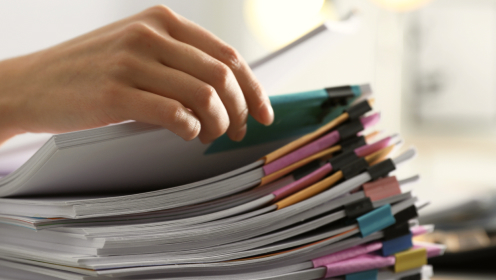A consistent Period End Close process is an essential component to a restaurant’s financial success. These reviews allow operators to analyze metrics and identify areas of opportunity with audits and benchmarks. Operators who have a true understanding of their fiscal health enable themselves the ability to make proactive business decisions. Additionally, it allows them to improve their operational efficiency, and ultimately, their profitability.
When closing out the period, operators should begin with a review of the financial statements; The Profit & Loss Statement, The Balance Sheet, and The Cash Flow Statement. Within each statement, there are even more defined areas of focus as a must-watch, for success. Throughout this post, we’ll dive into 11 accounts to review to ensure a successful period-end financial close.
House Bank
Gift Card Accounts
Credit Card Tips Payable
Preopening Expenses
Capital Expenditures
Due To/From Accounts
Accounts Receivable & House Accounts
Credit Cards
Vendor Payables
Catering Deposits
Note Payables
1. Closing Out The House Bank
Your House Bank is inclusive of all the money within the 4 walls of your restaurant; This is typically any money in your safe and in your drawers. Keeping your House Bank at the correct balance is important because it represents money that you own as a business (an asset). Balance Sheet accounts roll year over year, therefore, if this balance is not accurate then adjustments will need to be provided at year-end. In addition to avoiding adjustments, you can see where each penny of your cash is living and verify that all cash deposits make it in full to the bank.
Learn what causes incorrect balances in this account, how to correct any incorrect balances, and the best practices within the House Bank here!
2. Closing Out Gift Card Accounts
Gift Card Accounts are one of the most important Balance Sheet accounts from a cash flow perspective. They have a direct impact on cash flow. During certain times of the year, gift card sales will increase cash flow. However, when gift cards are redeemed and labor and food are utilized for the sales, no cash is flowing through to the bank. Forecasting and understanding gift card utilization allows you to forecast and plan cash flow. This is especially relevant during slower months.
Learn what causes incorrect balances in this account, how to correct any incorrect balances, and the best practices with Gift Cards here!
3. Closing Out Credit Card Tips Payables
Credit Card Tips Payable are tips that you collect throughout the week and payout to your employees on their paychecks. When paying out CC Tips on Checks, having a weekly pay frequency is critical to ensure proper cash flow. Additionally, properly recording and reflecting Credit Card Tips Payable is critical because payroll compliance should be a top priority for any business. Your payroll should be compared to what was recorded as collected, prior to submitting, to avoid payroll discrepancies and audits.
Learn what causes incorrect balances in this account, how to correct any incorrect balances, and the best practices within Credit Card Tips Payable here!
4. Closing Out Preopening Expenses
Preopening Expenses reflect the total startup costs associated with opening your restaurant. These are considered Capital Expenditures and can be amortized on the year-end tax return by your CPA. These expenses can range from training payroll costs, to food preparation, to utilities. Reflecting expenses on the Balance Sheet will generate a long-term return and show the true business value for potential investors.
Learn what causes incorrect balances in this account, how to correct any incorrect balances, and the best practices within Preopening Expenses here!
5. Closing Out Capital Expenditures
Capital Expenditures reflect the value of tangible items within your restaurant. These can be depreciated on the year-end tax return by your CPA. These will include money spent to buy, maintain, or improve fixed assets such as building, signage, cooking equipment, furniture & fixtures, and POS equipment. Capital Expenditures generate a long-term return and are understood as an investment. This is important when selling your business or presenting your business worth to potential investors.
Learn what causes incorrect balances in this account, how to correct any incorrect balances, and the best practices within Capital Expenditures here!
6. Closing Out Due To/From Accounts
Due To/From Accounts are essentially an intercompany transfer GL. Operators use these accounts to track money due to or from another entity. It shows the true value of your business when reviewing the Balance Sheet, and if not properly audited and tracked, they can quickly get out of balance.
Learn what causes incorrect balances in these accounts, how to correct any incorrect balances, and the best practices within Due To/From Accounts here!
7. Closing Out Accounts Receivable & House Accounts
Both Accounts Receivable and House Accounts reflect money that your restaurant is owed. Proper utilization and recording of the A/R Accounts allows full transparency into what is owed. This allows you to hold your partners accountable for reimbursement. In addition, Balance Sheet accounts roll year-over-year. Therefore, if the A/R balance is incorrect it remains so until proper adjustments are made.
Learn what causes incorrect balances in these accounts, how to correct any incorrect balances, and the best practices within Accounts Receivable and House Accounts here!
8. Closing Out Credit Card Accounts
Credit Cards can be wonderful for your business for a multitude of reasons. A few include the fact that they help control cash flow during slow months, and, they can also earn you fantastic rewards. However, if they’re not tracked, reconciled, and handled properly, they can create inaccurate financials. This in turn creates a ripple effect of negative activity. Understanding your credit card balance is critical to ensuring you can utilize it when needed while assuring that you’ve set yourself up for a positive cash flow position when you don’t.
Learn what causes incorrect balances in this account, how to correct any incorrect balances, and the best practices with Credits Cards here!
9. Closing Out Vendor Payables
Vendor Payables reflect the balance that is owed to a specific vendor. Understanding what you owe to your vendors allows true transparency and visibility into what leaves your account for cash flow purposes. Keeping these accounts clean ensures that the vendor is getting paid and you have an understanding of your outstanding balance at any given time.
Learn what causes incorrect balances in this account, how to correct any incorrect balances, and the best practices within Vendor Payables here!
10. Closing Out Catering Deposits
Catering Deposits reflect money that has been received but will be utilized at a later time. Understanding the cash impact and flow around these events is critical to ensuring that labor, food, and material can be purchased at the time of an event. Proper tracking of the outstanding deposits allows you to plan cash flow as events occur. It also helps to track balances ensuring that all money is received for each event.
Learn what causes incorrect balances in this account, how to correct any incorrect balances, and the best practices within Catering Deposits here!
11. Closing Out Note Payables
Note Payables reflect your restaurant’s current debt balance for loans and/or promissory notes. Understanding your current debt allows you to make educated, financial, business decisions. Additionally, it helps you truly understand how your business needs to perform in order to break even. Moreover, if balances are incorrect on the Balance Sheet, it could mean that expenses (typically interest) are missing on the Profit & Loss Statement. Ultimately, this impacts the bottom line within your restaurant’s profit.
Learn what causes incorrect balances in this account, how to correct any incorrect balances, and the best practices within Notes Payables here!







